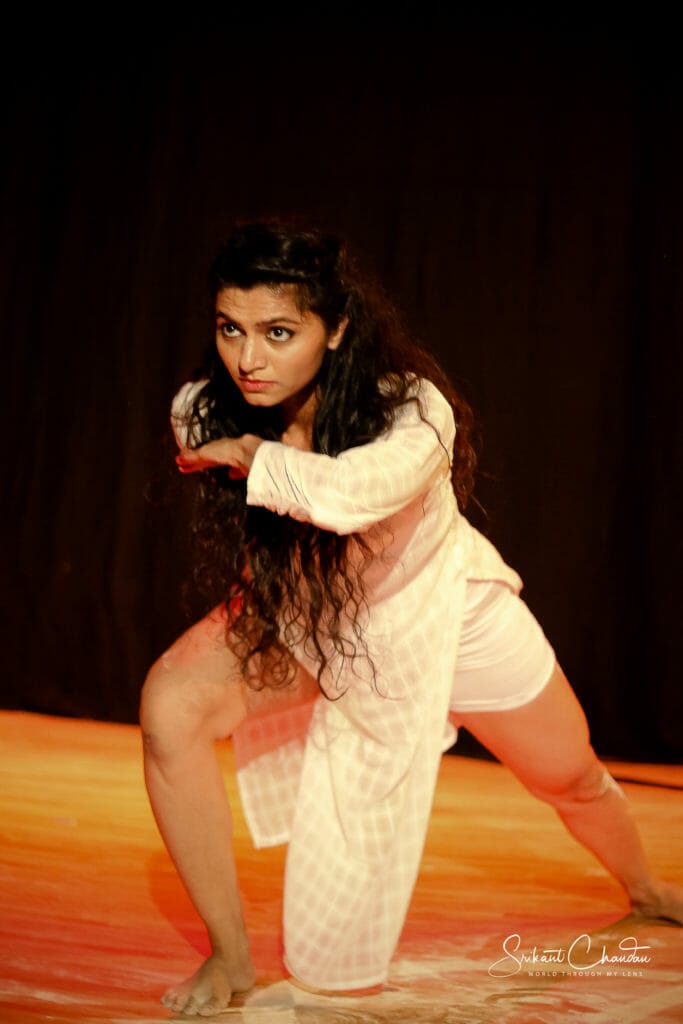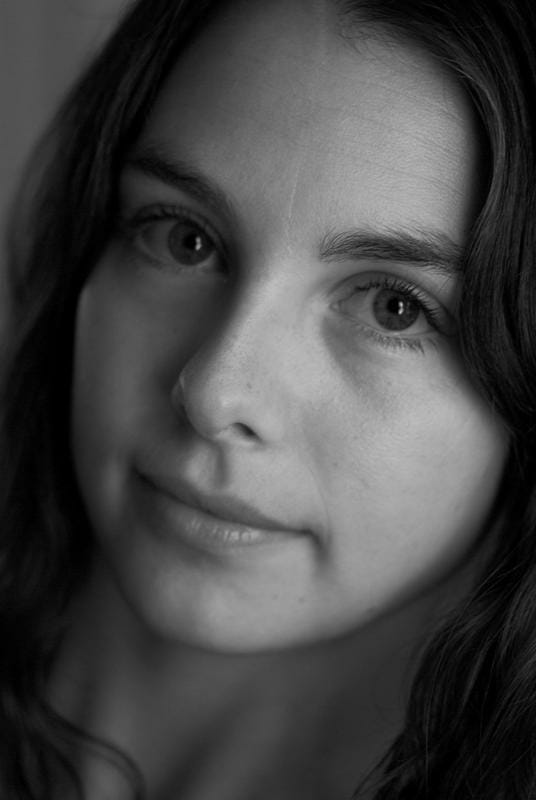Chicago Fringe Festival Explores Diversity...
Prakriti: A History of the Present, choreographed by Ishti, an artistic collaboration between Kinnari Vora and Preeti Veerlapati, premiered at the Chicago Fringe Festival on September 1, 2017 at the Congregational Church in Jefferson Park. This work in progress, according to Vora and Veerlapati, “traverses through our journey to find our tribe, our reactions (fear and dominance) to the different, and our ways to find balance.” Drawing from Indian classical dance, tribal folk dance, the South Indian martial art form of Kalaripayattu, as well as contemporary dance forms, this timely and pertinent work emerged out of a desire to explore both community responses to the current social-political environment as the as well as the dancers’ own views and behaviors, which they navigate sensitively and powerfully through movement.
The performance opens with a brief but powerful monologue by performer Anu Bhatt to set the scene: “We awaken, we rise… we are a tribe.” The five dancers (Anu Bhatt, Tuli Bera, Yarina Liston, Pretti Veerlapati, and Kinnari Vora,) begin in silence, clad in white kurtas and bare legs; their breath is audible as the original sound score by Bob Garrett slowly filters in. We sense them moving through developmental stages, starting with the breath, finding a connection to the core and distal limbs, and reconnecting to the Earth. The dancers slowly face the front of the stage and begin to walk forward, chanting the Gayatri mantra in Sanskrit, eyes glistening in the lights, slightly trance-like.
The dancers begin exploring the space, alternating between synchronous movement and more structured improvisation. Glimpses of traditional mudras representing deer and buzzing bees are observed as the dancers interact with one another. The dancers begin moving with bamboo staves, referencing the ritual Cheraw dance, a folk dance from Mizoram, India to create rhythmic beats while showcasing fast, spiraling movements. Vora playfully jumps in and out of the moving sticks, creating an exciting and heart quickening end to the first section.
The second section addresses the “safety threatened by what is unfamiliar” and begins with the dancers returning to movements inspired by daily routine. As one audience member remarked during the Q & A following the performance, the dancers seemed to be embodying the core essence of humanity, a time where things were more simple, a time before hate. We see the dancers washing clothes, grinding grain, sweeping and drawing kolam on the floor (South Indian floor drawing using rice flour). These pedestrian movements gradually develop into satisfying repetitive dance sequences as we hear Garrett’s music transition to more electronic beats. The dancers display shifting effect, cycling through fear, sadness, tension. The dancers enter into a Kalaripayattu martial art sequence, with some of the dancers entering the audience, ending on a very powerful but appropriately chaotic note.
Section three focuses on finding balance, with music by Shye Ben Tzur, Jonny Greenwood and The Rajastan Express. Bera and Vora open this section with a moving contact improvisation sequence. The dancers turn their backs to the audience, with their arms reaching towards the audience with gestures that seemed to communicate, “We are here, we are strong, but I may not accept what you have to say.” They transitioned into a whirling dervish like sequence as each dancer gradually breaks away. The dancers cycled through a gesture oscillating from the heart center and reaching outward. Vora later describes this movement as representing “how we absorb what is occurring.” The work ends with all of the dancers melting to the floor, leaving a few moments of stillness after this heartfelt exploration.
While watching this performance, it was important to remember that this was a work in progress, and the Chicago Fringe festival is a milieu to workshop these ideas and gain feedback from the audience. The small performance space and buzzing speakers made it difficult at times to be immersed in the work and to fully appreciate Garrett’s intricate score.
It was clear that the dancers were somewhat hindered by the spatial constraints and not able to fully expand their movements, but being a part of the Fringe festival often has its limits. It is certain that these dancers are on the brink of discovery and exploration. It is always a slightly vulnerable but integral moment to bear witness to an artist’s process, but with some more time for incubation, continued feedback from the artistic community, and a more appropriate space to showcase this work, this writer strongly believes that this work has potential to develop into a beautiful and powerful embodiment of the current political climate and how we find balance as a community.
When:
September 3 at 4:00 p.m.
September 9 at 5:30 p.m.
Where:
Congregational Church of Jefferson Park’s Gym
5320 W Giddings 3rd Floor,
Chicago, IL 60630
Tickets:
$10 with a one-time $5 button purchase
For more information, visit the Chicago Fringe Festival website
Photos: Srikant Chandan
About the Author:
Ashley Fargnoli is a dancer, choreographer, and dance/movement therapist She honed her choreographic skills at Jacob’s Pillow's Choreographers Lab and has implemented numerous dance projects around the world, including in the Balkans with the goal of ethnic reconciliation. She additionally trained in ballet and modern dance at the American Ballet Theater, Pennsylvania Academy of Ballet, and Central Pennsylvania Youth Ballet., and in France with the Ballet de Lorraine (Nancy), at the Conservatoire de Nantes and also performed with the National Ballet in Sarajevo. When not performing or choreographing, Ashley works with refugees as a dance/movement therapist.
EDITOR'S NOTE: The author of this review has studied and performed with other Indian dance troupes and was asked to do a peer review of this performance by Ishti, prior to the opening of the Fringe Festival. Read Picture this Post's profile of Ashley Fargnoli, including an account of her dance performance and humanitarian work in India, Europe, and US here.
This has been added to our Choreographers Eyes Page, choreographers talking about what their more experienced choreographer eyes see.
Learn more about dance by seeing dance through dancers eyes in the Picture This Post series, “Choreographers’ Eyes - Dancers Explain Dance”. Watch this video preview of the story here—





